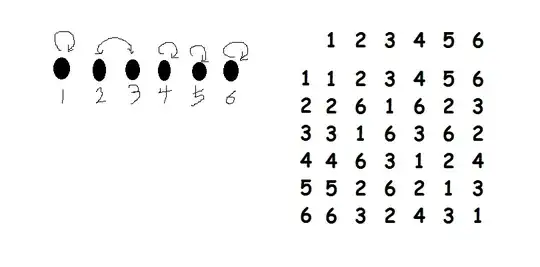I have already tried with $S_3$, and indeed, the product is $(13)$, and $(13)^2=e$

But what about this: I define + in this way:$45=2$,$26=3$, $1$ is the identity. therefore, $123456=2326=233=3$, and as you can see from the picture, the inverse of $3$ is not itself, thus contradicts the statement.
My question:
What is wrong with my argument?
And How do you prove the statement?
it seems that my set of numbers perfectly forms a group under the operation I defined via the table above. first it's closed, second there is an identity, third every elements have an inverse. By the way it's commutitive. I tried (45)2=22=6=42=4(52), (45)6=26=3=43=4(56), so associativity seems to be satisfied.